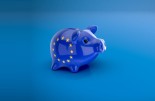Crédit Mutuel AM: The ECB gets a step closer towards market neutrality

Unless there is a surprise, the European Central Bank (ECB) is expected to cut the key interest rates by 25 basis points (bps) during its meeting on Thursday, January 30th, following four successive rate cuts since last June. These are our expectations:
- The Governing Council of the ECB will once again cut key interest rates by 25 bps each, with an inflation projection around the 2% medium-term target and inflation risks, both upward and downward, largely balanced. This will bring the deposit facility rate to 2.75%, the refinancing rate to 2.90% and the marginal lending facility rate to 3.15%.
- While the ECB still expects economic activity to recover this year, it will highlight that risks weighing on growth remain oriented downward; there being a risk that inflation could be below the 2% target if growth in the region remains weak.
- Going forward, ECB president Christine Lagarde will indicate that the central bank will proceed cautiously and adopt a balanced approach as the ‘neutral' rate (a level that neither stimulates nor restrains the economy) comes near. It estimates the neutral rate to be between 1.75% and 2.5%. At this point, most ECB members have indicated that the goal is to reach the neutral rate this year, likely by the end of the first semester.
- Echoing the minutes of the FMOC’s December meeting, we do not expect Christine Lagarde to announce that the ECB has any intention of cutting interest rates more aggressively (50 bps) unless the risk of a recession in the region arises.
- The ECB will remain data dependent before reevaluating growth and inflation forecasts at the upcoming March committee meeting.
In conclusion, the ECB will be on ‘autopilot’ in January, pending the release of new macroeconomic forecasts during the Monetary Committee on March 6th. This rate cut, widely anticipated by investors and very much alluded to by central bank members, should not trigger a strong market reaction.







